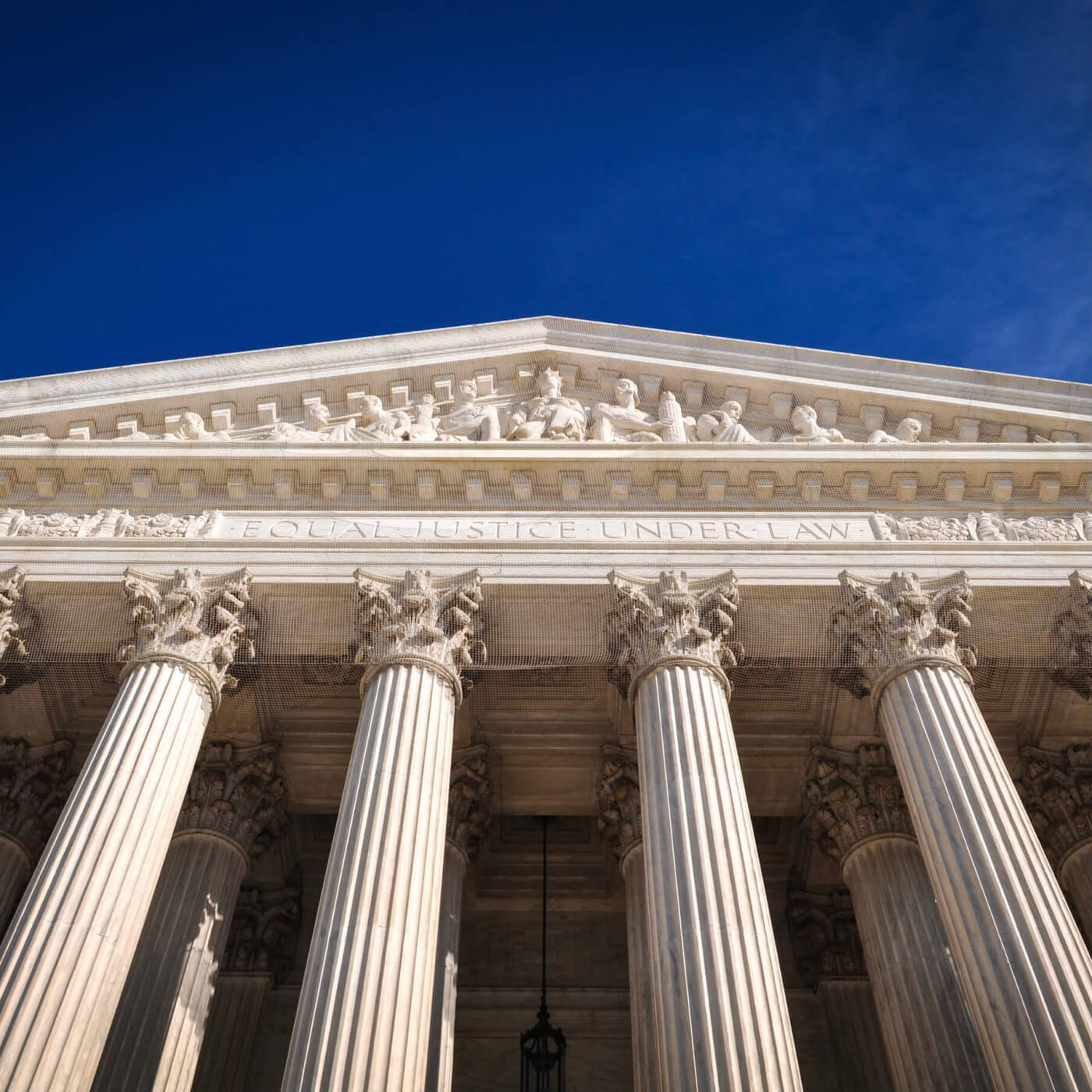Written by Bennett Kirschner
As a right-wing agenda is pushed through the US Supreme Court, the court’s status as an apolitical institution, removed from the fractious discourse of national politics, becomes more and more dubious. That status was already in question for the past two decades: events such as the passing of Citizens United in 2010, which allowed unlimited amounts of anonymous private funds to be poured into political campaigns, the Republican caucus’s obstinate blockade of Merrick Garland’s nomination in 2016, and the revelation that Clarence Thomas’s wife, Ginni Thomas, implored lawmakers across the country to support Donald Trump’s attempted coup in January 2021 have collectively drawn attention to the fact that the court is not removed from the partisan politics it was designed to adjudicate. In fact, the Supreme Court is just as, if not more, partisan than Congress itself.
The 2021-2022 judicial term brought on a whole new level of earth-shattering decisions. With Amy Coney Barrett comfortably situated as its sixth Republican justice after being sworn in in 2020, the nation’s highest court had a wealth of opportunities to assert itself. And while the erasure of a woman’s right to choose in Dobbs v. Jackson Women’s Health Organization was by all accounts the most dramatic decision passed, it also epitomized a more widespread erosion of civil liberties spearheaded by the court. To name a few: the EPA’s ability to regulate energy companies was greatly reduced (West Virginia v. Environmental Protection Agency); states’ rights to enforce gun restrictions were curtailed (New York State Rifle & Pistol Association v. Bruen); and the separation of Church and State, a core precept of the Constitution, took numerous decisive hits (Kennedy v. Bremerton School District and Carson v. Makin).
With its legitimacy already in question and more momentous decisions on the docket for the 2022-2023 cycle, the Supreme Court has become the subject of widespread scrutiny and speculation. How, moderate and left-wing citizens wonder, could its institutional legitimacy be restored, and its fealty to a right-wing agenda counteracted? What options are there for reforming the court immediately, without exacerbating its image as an instrument for political gain? From term limits to court-packing, an array of actions could be taken by President Biden, who can advocate or unilaterally pass measures to ward off the Court’s rightward trend. Below, we’ve quickly mapped out the two measures that have gained the most political traction, along with a brief explanation as to what they would look like:
Term Limits: Of the reforms recently proposed, this appears to be the least controversial. All other constitutional democracies in the world have either a mandatory retirement age or a fixed term limit for their high court Justices. The existence of lifetime appointments motivates both parties to strike a balance in nominations between qualifications and youth, since it’s in their best interest to inaugurate Justices who will faithfully adhere to their party’s agenda and remain on the bench for as long as possible – Clarence Thomas has now been in office for over 30 years, and he’s only 74. Term limits, then, would ensure that Justices are nominated according to their experience, not just their youth, and that the American electorate – in other words, we – have a more direct and predictable say over the bench’s makeup. The commonly proposed term limit is 18 years – once enough time has passed, this would mean that approximately two Supreme Court seats would hang in the balance with each Presidential election cycle.
Currently, five out of six of the Republican Supreme Court Justices were nominated by wildly unpopular Presidents who didn’t even win the popular vote. Considering the fact that their average age at nomination was 50 years old, it’s not unreasonable to expect that most of them will stick around for at least 30 years, perhaps even as many as 40 – Ruth Bader Ginsburg, for instance, served until she passed away at 87. Instead of being stuck for indefinite periods with Justices whose nominations came decades before, sometimes under dubious circumstances, the American people should have the chance to regularly influence the makeup of the Court. Replacing a lifetime appointment with a term limit of 18 years would mean that Presidential elections carry much more weight, perhaps inspiring higher voter turnout as well.
Court-Packing: The Biden administration has a quick, not altogether unprecedented measure at its disposal – expanding the court to include more seats. Unlike term limits, which would require the approval of Congress, this measure could be imposed without the approval of any legislative body. If President Biden took advantage of his position and nominated four liberal Justices today, Democrats in Congress would still have the majority they need to confirm those nominees and get them on the bench in a matter of months.
It’s an increasingly popular, albeit controversial, proposal. One source of hesitancy among less progressive Democrats is that court-packing could lead to a spiral of indefinite political retribution. Who’s to say that Republicans won’t expand the court back in their favor as soon as they take control of the Executive Branch? Wouldn’t such an action drive the Court even more deeply into the partisan muck? Doesn’t court-packing therefore feed into the politicization of the Court, instead of restoring its integrity as a neutral judicial body?
The problem with this objection, though, is that it falsely assumes that Republican politicians have enough humility to put the interests of our democracy over those of their party, when we are already deep in the throes of a full-fledged national assault on voting rights. Since the Court’s 2013 decision to nullify part of the Voting Rights Act, Republican lawmakers have wasted no time chipping away at voters’ ability to cast ballots while expanding the power that incumbent politicians have to certify (or not certify) ballot counts. With several new voting rights cases on the docket for 2022-2023 – most notably, one that could give state legislators unchecked power to draw state voting maps in their favor – this Supreme Court could help propel that assault even further. And there’s no reason to hold out hope that we’ll be pleasantly surprised by the current bench, since this Conservative majority has already allowed Alabama and Louisiana to reinstate racist voting maps, even after those maps were overturned by their respective State Supreme Courts.
Over the course of the coming months, President Biden faces an obvious moral imperative – before Republicans likely retake Congress in 2023 and the Supreme Court has the chance to pass more restrictive voting laws that explicitly favor Republicans, he should do everything in his power to pass term limits and balance the courts. With his leadership, we can preserve one of our most fundamental democratic pillars and restore the Court’s institutional integrity.
Time is of the essence.


















